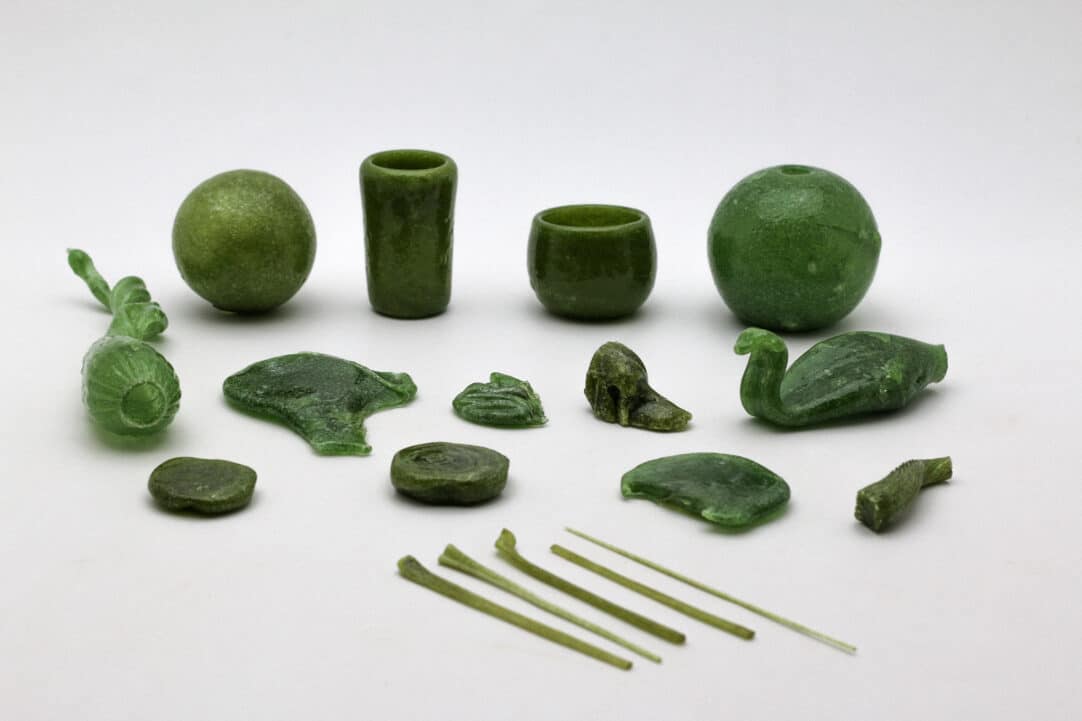Glass artist Lulu Harrison took up her place at Cockpit earlier this year as the first recipient of our Glass Sellers’ Bursary. Lulu joined us for ‘Heart of Glass’ in early April – the first in our new series of online talks with makers.

Glass artist Lulu Harrison took up her place at Cockpit earlier this year as the first recipient of our Glass Sellers’ Bursary. Lulu joined us for ‘Heart of Glass’ in early April – the first in our new series of online talks with makers.
In the first of our new series of online talks, we delved in to the highlights of this year’s UN International Year of Glass with Katharine Coleman MBE, Michèle Oberdieck and Lulu Harrison.
You can view our recording in full HERE.
Lulu Harrison‘s practice is one driven by innovation and exploration. She is a self-taught glass artist, specialising in glass alchemy and in her final year of her MA at Central Saint Martins, studying Material Futures.

We asked Lulu to share her thoughts about her current project Thames Glass…
For the last two years I have been making glass from different waste and local materials sourced from in and around the River Thames.
A lot of my research has been inspired by ancient glass making methodologies and techniques, all in support of my current thesis question: How can we seek a more sustainable alternative future for the glass industry, whilst taking influence from Ancient methodologies?
With extraction of raw materials becoming a pressing environmental issue, as well as constantly rising transportation costs and emissions, I have been interested in finding alternatives to the highly processed and finite materials that are often used in glassmaking.
I was also interested in seeing how these natural materials could influence the colour and texture of the glass through their chemical properties

Here you can see some of the materials I have been working with including waste shells, local sand samples and various ashes. There is a huge amount of work put into the actual processing of materials and to get them to the right state ready for making batch. This includes a lot of washing, cooking, grinding, and sieving which can get pretty messy.
Throughout this process, I have been working alongside The Post Disciplinary & Experimental Glass Group, Dr Simon Chenery from the British Geological Survey, and scholars in glass archaeology such as Ian Freestone and Julian Henderson and finally Thames Water.
By combining crafts, design and science, I have become interested in this idea of redefining the meaning of ‘luxury’, through working with waste materials and local communities. I am also interested in this idea of creating a glass which places emphasis on the narrative of the materials used to make it, and how this is reflected in the physical properties of the glass itself. It can also tell us a lot about the location where the materials come from and creating a geo specific glass.

I have been extremely lucky to get to collaborate with hugely talented glass blowers on this project, including KT Rothe, Sacha Delabre and Rosie Power. It has been a huge amount of trial and error to get to an actual workable glass, but extremely satisfying when it does work.
Here you can see some pictures of the glass melting and blowing process, and working with the molten material.

This is a picture of one of my most recent Thames Glass recipes, which came out a beautiful aqua blue. It has been an amazing experience getting to see the glass blowers work with my recipes, and learning more about the blowing process myself. This is definitely something I would love to gain skills in over time.

This was one of the last collections we made using variations of my Thames Glass recipes. The shapes were inspired by a lot of ancient roman glasses, and the texture and thickness of the glass also lends nicely to this. I also like the imperfectness about them, which is due to impurities in the materials made to make them. Almost like the concept of wonky fruit, but for glass and working with local materials, local production and local communities.

And finally here are some of my previous test pieces carried out in crucibles using a kiln firing, and exploring how varying the amount of certain ingredients can influence the colour of the glass.
You can follow Lulu‘s research and progress on Instagram @lulu_h___ and meet with her in her studio during our Summer Festival.